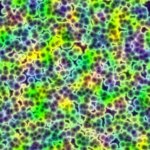The Microbiology of Water Damage. From the standpoint of a property owner, a flood and a burst sewer pipe can be responsible for the same amount of property damage. For professional water damage restoration companies, the differences are vast and the dangers are very different.
 The reason is that clean versus contaminated water damage results in very different health-related threats. Destruction that results from fire fighting, rain or ocean water must be contained right away to stop the formation of black mold and the structural degradation that results from excess moisture. Mold presents its own unique challenges as a primary cause of respiratory illnesses, which can be fatal for children and people with a compromised immune system. Time is of the essence because once mold has begun to grow, it is nearly impossible to completely eradicate.On the other hand, sewage problems expose properties and contents to toxic levels of bacteria and biological hazards. Sewage cleanup services are a far more dangerous operation from start to finish and require very specialized equipment.
The reason is that clean versus contaminated water damage results in very different health-related threats. Destruction that results from fire fighting, rain or ocean water must be contained right away to stop the formation of black mold and the structural degradation that results from excess moisture. Mold presents its own unique challenges as a primary cause of respiratory illnesses, which can be fatal for children and people with a compromised immune system. Time is of the essence because once mold has begun to grow, it is nearly impossible to completely eradicate.On the other hand, sewage problems expose properties and contents to toxic levels of bacteria and biological hazards. Sewage cleanup services are a far more dangerous operation from start to finish and require very specialized equipment.
![]() The Inspection Cleaning and Restoration Certification (IICRC) S500 standards clearly lay out that any trace of sewage or “black water” leakage qualifies the event as a Category III disaster. This indicates an extremely hazardous situation that may include fungal, viral and pathogenic contamination. The entire area and surrounding properties need to be cleaned in an environmentally responsible manner. Although odor control chemicals and disinfectants must be used, their specific deployment cannot compromise the health of the environment in the process
The Inspection Cleaning and Restoration Certification (IICRC) S500 standards clearly lay out that any trace of sewage or “black water” leakage qualifies the event as a Category III disaster. This indicates an extremely hazardous situation that may include fungal, viral and pathogenic contamination. The entire area and surrounding properties need to be cleaned in an environmentally responsible manner. Although odor control chemicals and disinfectants must be used, their specific deployment cannot compromise the health of the environment in the process
